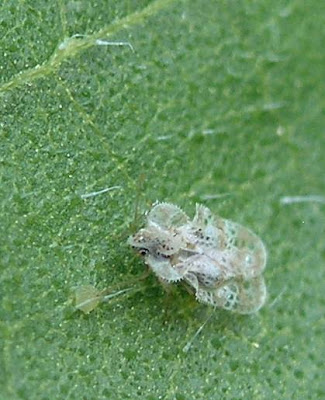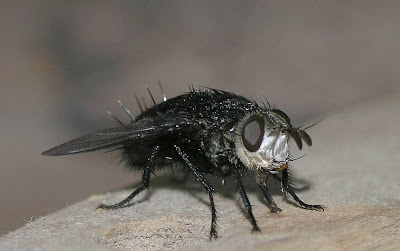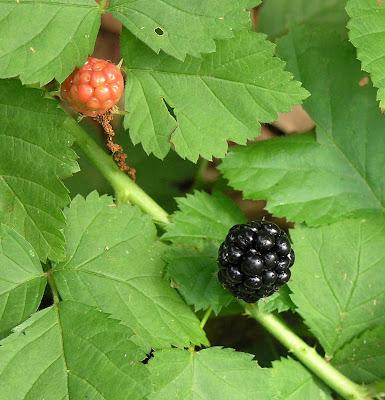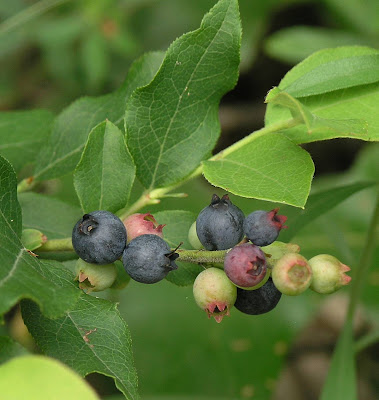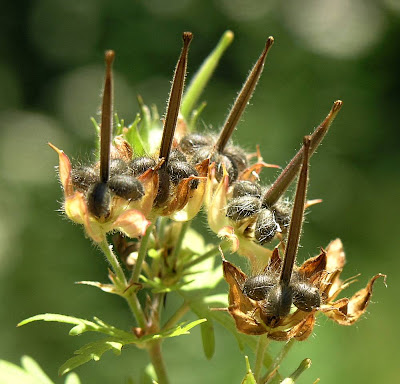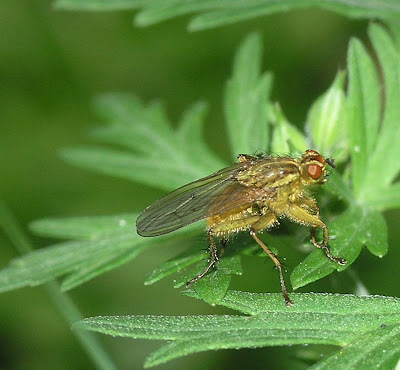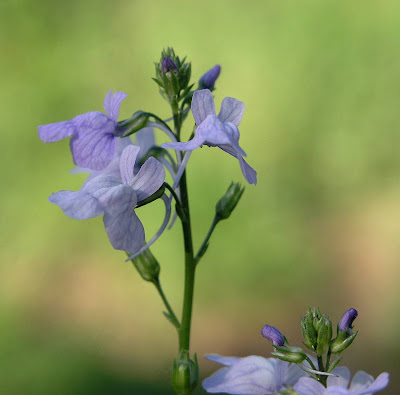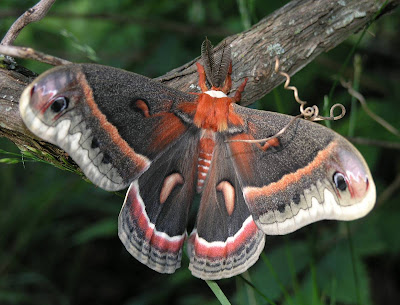 Cecropia Moth (Hyalophora cecropia)
Cecropia Moth (Hyalophora cecropia)With it's bright colors and nearly six inch wingspan, this Cecropia Moth was one of those make-your-day finds for Jo and I. (Jo gets the credit for both the find and the photos.) It is the largest moth native to the United States. Judging by it's nearly pristine condition and the fact it was very tolerant of our taking photos, I'd say this this Giant Silkworm Moth had recently emerged from it's cocoon. (There's a word for that, but it escapes me.) Over the winter we'd seen a Cecropia Moth cocoon up in the tree above where this moth was found, but at the time we didn't know what it was.
Jo found the moth at the base of the tree an hour or so before sunset. It stayed in that location for forty-five minutes or so before finally taking flight. When it finally did fly, it could have easily been mistaken for a bat.
Like all Giant Silkworm Moths, Cecropia has a brief lifespan as an adult moth -- only a matter of days. It does not feed, but only finds a mate, breeds, lays eggs if a female and dies.
I've identified this moth as a male because of its large, full and feathery antennae. Females emit pheromones to aid males in finding them. Males "smell" these pheromones via receptors on their antennae. Therefore, males have evolved larger antennae to heighten their sense of smell. (A photo of a female Cecropia is
here for comparison.)
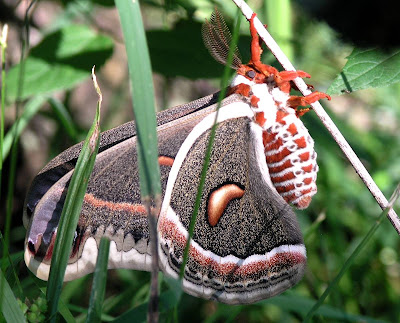
Species details from
Butterflies and Moths of North America:
Family: Wild Silk Moths (
Saturniidae)
Subfamily: Giant Silkworm Moths (
Saturniinae)
Identification: Body is red with a white collar and white bands on the abdomen. Wings are dark brown with white hairlike scales giving a frosted appearance; forewings are red at the base. Crescent spots and the area outside the postmedian line are red on all wings.
Life history: Females lay rows of 2-6 eggs on both sides of the leaves of small host trees or shrubs. Eggs hatch in 10-14 days. Young caterpillars feed in groups on leaves; older caterpillars are solitary. The cocoon is attached along its full length to a twig; to escape predation by rodents and birds, the cocoon is usually constructed in a dark, protected area.
Flight: One flight from March-July in most of the range; two flights in the Midwest, from May-early June and then 2 weeks later.
Wing span: 4 5/16 - 5 7/8 inches (11 - 15 cm).
Caterpillar hosts: Various trees and shrubs including box elder (Acer negundo), sugar maple (Acer saccharinum), wild cherries and plums (Prunus), apples (Malus), alder and birch (Betulaceae), dogwoods (Cornus), and willows (Salix).
Adult food: Adults do not feed.
Habitat: Successional habitats in many areas including urban and suburban environments.
Range: Nova Scotia and Maine south to Florida; west across southern Canada and the eastern United States to the Rocky Mountains.
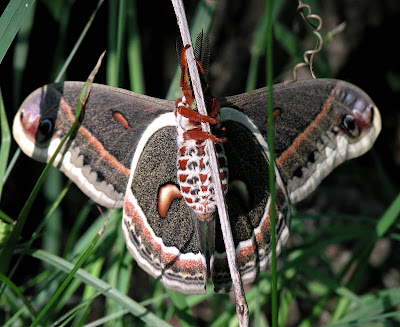
On a more somber note, the population of Cecropia and other giant silkworm moths is in decline in the United States, especially in the northeast. The story begins around 1869 when an amateur entomologist attempting to breed better silkworms accidentally released gypsy moths he'd imported from Europe. By the turn of the century, gypsy moths were running rampant and deforesting large areas of the northeast. In response, various agencies imported from Europe and released large quantities of the parasitic fly
Compsilura concinnata. The fly no doubt parasitized and destroyed an untold number of gypsy moth larva, but unfortunately, it is not species specific and is the prime suspect in the decline of various moths. In one study, researchers from the University of Massachusetts baited a tree with silkworm moth caterpillars. Over 80% were destroyed by
Compsilura maggots.

Cecropia Moth (Hyalophora cecropia)





